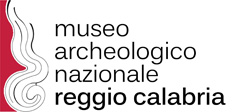centuries BC, but the presence of older materials has led to the hypothesis that the burial existed already from the classical age. They are of different types. From the simple ustrina (remains of incineration on pira) in the burial “to cash” up to the more advanced rooms in brick with barrel vault or with cover “to book” to tiles. Some finds of the burials are included in the exhibition path in the basement of Palazzo Piacentini, level E.
A nucleus coming from the Civic Museum, where it was exhibited for the first time in 1882, on the occasion of a visit to Reggio Calabria by the historian, archaeologist, German jurist Theodor Mommsen, was later enriched with finds from the numerous archaeological investigations carried out on the territory . At level E, there are monumental inscriptions, marble bases and numerous architectural and decorative apparatuses of various chronology, capitals, columns of columns belonging to different buildings of the Greek and Roman cities of Calabria. With some rare exceptions, the inscriptions have arrived avulsed from the original archaeological context. Some of the epigraphs on vases and small objects and larger exhibits are exhibited in the rooms on the upper floors.
The visits service is organized by the Volunteers for the Cultural Heritage of the Italian Touring Club of Reggio Calabria and is carried out on Wednesday and Saturday, from 9.00 am to 1.00 pm, and on Sunday, from 9.00 am to 1.00 pm and from 3.00 pm to 7.00 pm.
At this level temporary exhibitions are hosted, which are part of the cultural heritage enhancement activities, to promote their knowledge through diversified and interdisciplinary fruition methods, and through the conscious experience of the various expressions of the collective cultural identity.

